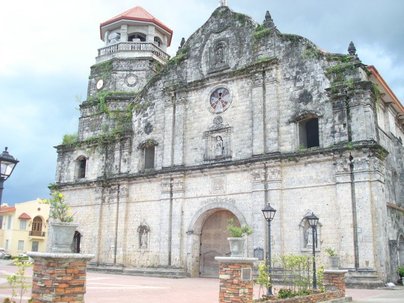Brief History of Panay

Panay is the place where the dawn of Christianity started. It is also
the center of the first act of revolt against the Spaniards in the
Province of Capiz. The first encounter between the Filipino
revolutionaries and the Spanish forces happened in May1897 at Tadiao
Bridge. Despite the inferiority in manpower and arms, the
revolutionaries were able to repulse the advance of the Spanish forces
by sheer ingenuity. Using only “gafas” or nipa stalks which looked like
rifles from afar, they simultaneously fired the seven guns that they
have. The Spaniards thinking that the Filipino revolutionaries were
well equipped and prepared retreated to Capiz now Roxas City.
The following day, the Spaniards regrouped well armed and prepared, went back to Panay on big boats tied in two’s (Conduccion) through Banica River. Upon reaching Lahab River near Panay town proper, the revolutionaries armed with cannon, rifles, bolos and spears laid an ambush to the Spanish forces.
The Filipinos untrained in the use of cannon fired at the Spanish forces but missed. A fierce battle ensued and the Filipinos inferior in arms and number ultimately retreated to the Poblacion using what is now called Calle Revolucion. The pursuing Spanish forces put the town into torch and spared only the Sta. Monica Church and the Parish Convent, reason why no old houses can be seen in town today. The battle raged on and ultimately the revolutionaries retreated to Balisong Hills in the Town of Pilar where the last battle between the Spaniards and the Filipinos was fought.
Today, the centuries‐old Sta. Monica Church is one of the major tourist attractions in Capiz. Declared as National Heritage by the National Historical Commission in 1997, Sta. Monica Church houses in its 5-storey belfry a gigantic bell whose booming sound can be heard 8 kilometers away. It is made of 70 sacks of coins and weighs 10.4 tons, the biggest Catholic Church bell in Asia.
The following day, the Spaniards regrouped well armed and prepared, went back to Panay on big boats tied in two’s (Conduccion) through Banica River. Upon reaching Lahab River near Panay town proper, the revolutionaries armed with cannon, rifles, bolos and spears laid an ambush to the Spanish forces.
The Filipinos untrained in the use of cannon fired at the Spanish forces but missed. A fierce battle ensued and the Filipinos inferior in arms and number ultimately retreated to the Poblacion using what is now called Calle Revolucion. The pursuing Spanish forces put the town into torch and spared only the Sta. Monica Church and the Parish Convent, reason why no old houses can be seen in town today. The battle raged on and ultimately the revolutionaries retreated to Balisong Hills in the Town of Pilar where the last battle between the Spaniards and the Filipinos was fought.
Today, the centuries‐old Sta. Monica Church is one of the major tourist attractions in Capiz. Declared as National Heritage by the National Historical Commission in 1997, Sta. Monica Church houses in its 5-storey belfry a gigantic bell whose booming sound can be heard 8 kilometers away. It is made of 70 sacks of coins and weighs 10.4 tons, the biggest Catholic Church bell in Asia.
